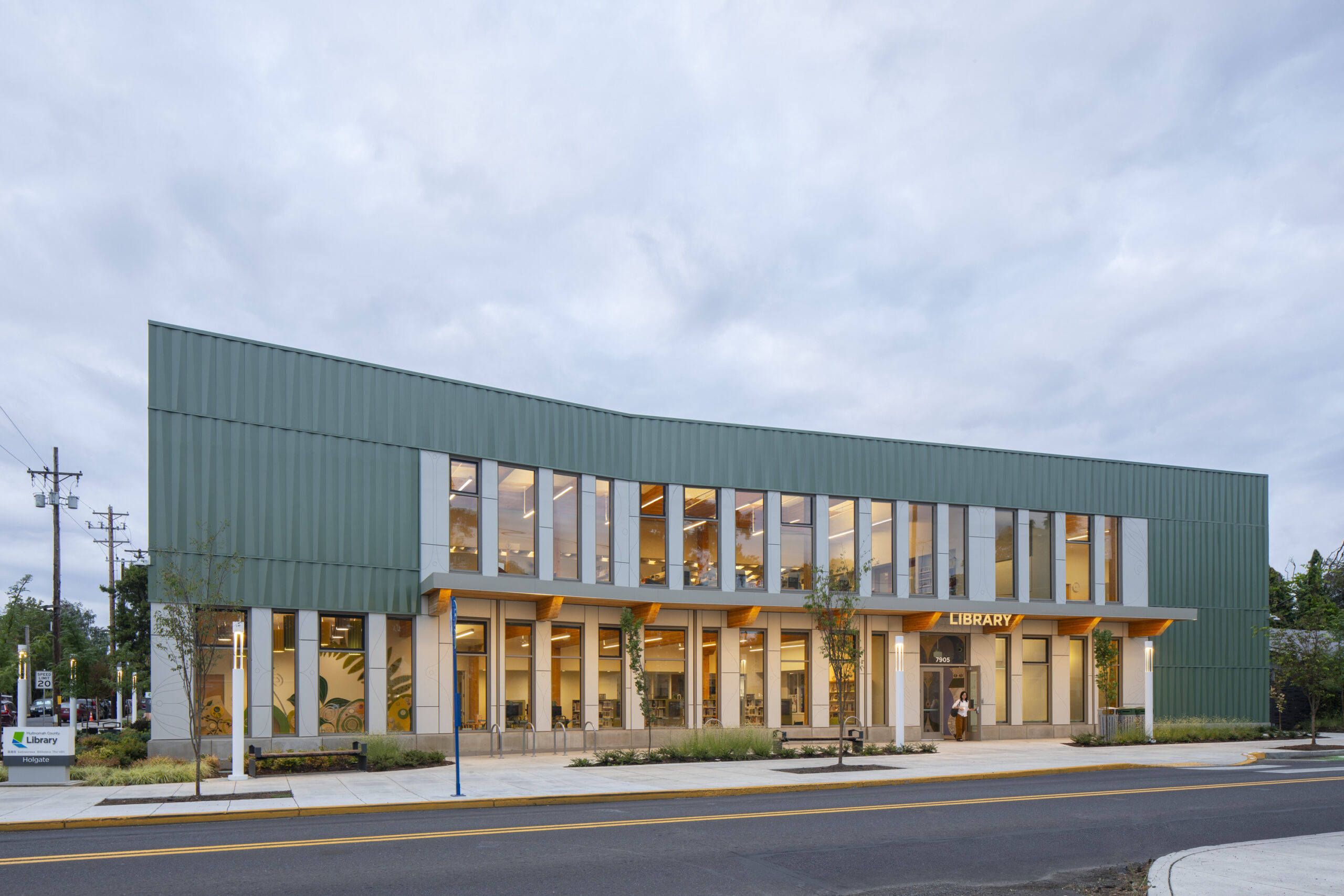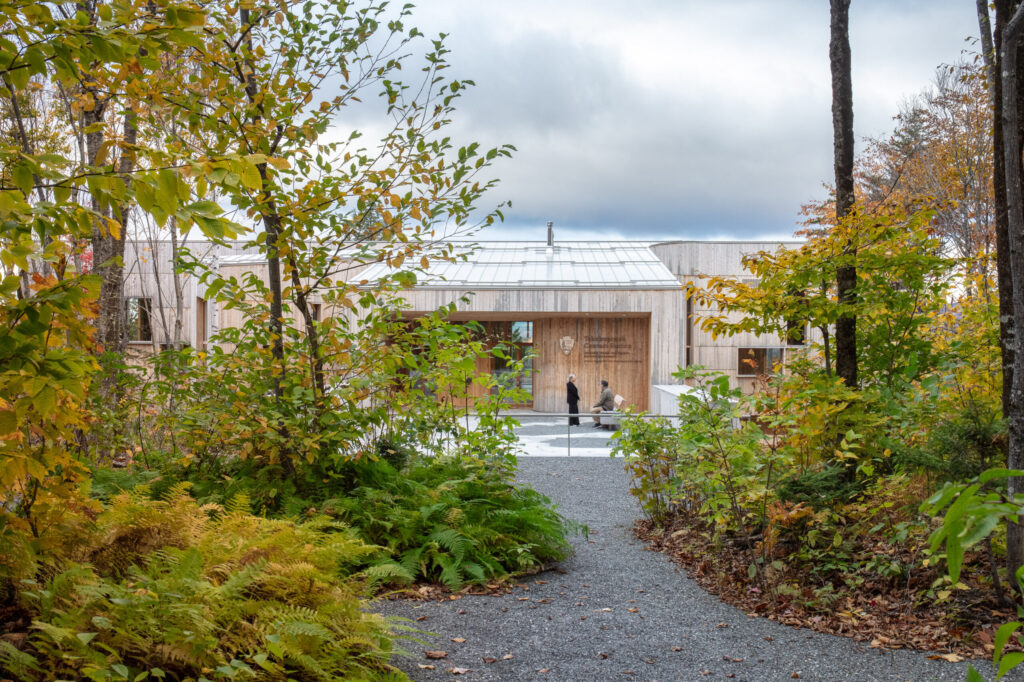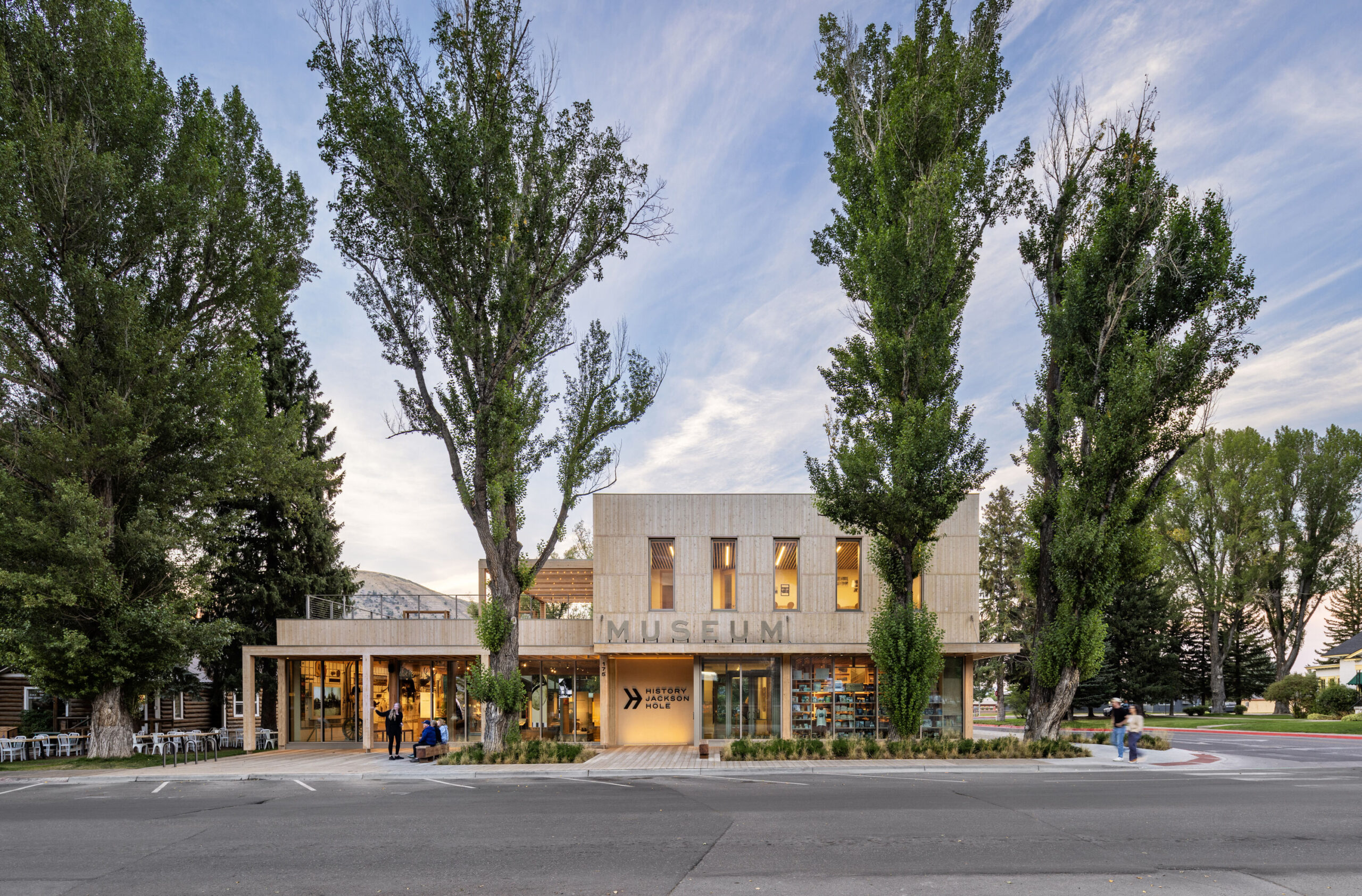Civic Community
Game Changer: San Antonio Spurs’ Mass Timber Practice Facility the First of its Kind
As the largest mass timber training facility in U.S. professional sports, the Victory Capital Performance Center is changing the game when it comes to long-span wood construction for high-performance athletic buildings. Home to practice facilities and basketball operations for the San Antonio Spurs, the light-filled mass timber and concrete structure is a contemporary nod to the region’s iconic Mission-style architecture while providing a column-free sports venue with unique biophilic wellness features.
Victory Capital Performance Center
Setting New Records: Largest Mass Timber Training
Facility in Pro Sports
“Players live in an endless cycle of travel with no time outside, disrupting their rhythm and recovery. Our goal: infuse the facility with a natural palette, exposed wood, light, views and spaces that prioritize human performance, circadian rhythms, and rest as much as training,” Berg explains. “So we turned to organic materials, like mass timber, and a design that draws in sunlight throughout the duration of the day and gives access to the outdoors whenever possible,” she adds.
Dubbed the Victory Capital Performance Center, the facility’s primary structure is formed from glued-laminated timber (glulam) columns and beams spanned by cross-laminated timber (CLT) decking and supported by masonry shear walls. When it was completed in 2023, it was the largest mass timber structure in Texas.

Victory Capital Performance Center
The nearly 140,000-square-foot project uses the largest continuous glulams on the market, with 20 beams—each 130 feet long and 75 inches deep—to achieve its clear-span interior while pushing the limits of available materials. Steel knife plates and bolt connections are neatly concealed behind at least two inches of wood. The double glulam beams house acoustic material, fire suppression, and lighting conduits, and Douglas fir fins tuck away acoustic materials to reduce sound reverberation and house return air louvers.
By the firm’s account, the structural wood stores the carbon equivalent of taking more than 420 passenger cars off the road for a year, or equivalent to the amount of carbon sequestered by nearly 2,300 acres of U.S. forest in one year of growth.
Programmatically, the facility is divided into four zones. The first comprises “grit spaces,” or the heart of the athletic training program, including full-size practice courts, strength conditioning zones, locker and changing rooms, and an environmental training room. This includes two standard NBA-sized practice courts and one half-court for shooting labs.The second has “treatment spaces” for recovery, and blends facilities for physical therapy—aquatics, float tanks, saunas, therapeutic treatment spaces, and steam rooms—with spa-like tranquility. The third is “collaborative social zones,” including lounges, dining areas, coffee bars, and impromptu seating areas where the team connects and recharges. The final zone has more conventional offices and support spaces for up to 70 staff members, including conference and meeting rooms.
An east-facing public entry features board-formed concrete and glass fiber reinforced concrete piers that form a colonnade to display championship banners and guide visitors to the glass-enclosed entry lobby. A private staff entry as well as a separate players entrance are accessed from a secured parking level below the building.

Victory Capital Performance Center
Home Advantage: A Playbook for Regional Placemaking
Along with the elemental use of mass timber, Berg’s team saw an opportunity to ground the facility’s design in a strong sense of place.
“Strip the team branding off many of these types of venues and you can’t tell where you are in the world,” Berg says. “We wanted to design a facility that is truly indicative of its setting and with a design that felt true to San Antonio.”
As a result, the project’s unadorned materiality reflects the region’s historic Mission-style architecture, which is characterized by masonry walls supporting heavy exposed timber beams and roofs, along with an integration of courtyards and arcades. “We really became enamored with the way that you move up and down in San Antonio’s varied topography,” Berg says. “Drawing from the region’s architectural roots, we revisited traditional and Spanish colonial styles, alongside San Antonio River Walk configurations, for a design that adapts to Texas’s harsh summers and variable winters.”
To this end, the facility makes a unique use of colonnades for shelter, shading, and navigation, along with open courtyards for seamless transitions between indoor and outdoor spaces.
Located in the suburban northwest side of the city on a 22-acre site set to become a wellness hub for the greater San Antonio community, the development is a partnership between Spurs Sports & Entertainment and Lincoln Property Company named the “The Rock at La Cantera,” a reference to the site’s former life as a limestone quarry.
“Along with the regional references, our architectural narrative mirrors our client’s mission: ‘Pound the rock,’” Berg says. She notes that the design, like the slogan, draws on a quote from journalist Jacob Riis on persistence and breakthrough, and is manifested in elements like repeated columns and cloisters to symbolize strength and determination. “The interplay of these repetitive structures with the unique San Antonio sunlight is quite beautiful and comes alive throughout the day—almost acting like a make-shift sundial,” she says.

Victory Capital Performance Center
Biophilic Boost: Optimizing Human Performance
This attention to sunlight, orientation, and natural materials also links to the project’s biophilic design objectives and the desire to continuously connect the athletes and staff to a sense of nature and the outdoors.
Occupants can step outside from any of the primary spaces in the building, Berg says. This includes an alfresco dining zone, a garden designed for recovery after workouts, balconies attached to the office areas for outdoor phone calls, and outdoor training zones.
“Focusing on athlete health means choosing materials carefully, with wood standing out for its natural properties and lack of off-gassing, enhanced by advancements in non-toxic glues,” Berg says. “The biophilic design, featuring visible wood grain, supports the well-being of athletes under constant pressure.”
Along with exposed wood and ample sunlight in offices, therapeutic, and common areas, natural light streams into the practice spaces through a series of clerestory windows. The daylit courts are equipped with motorized sun shades to control glare during early morning practice.
“Natural sunlight was balanced with the need for privacy,” Berg says. “Setting the glazing back some distance, with a combination and layering of the building’s architectural elements, not only adds interest but also offers a screening and blurring effect for a sense of retreat and seclusion, when needed.”

Victory Capital Performance Center

Victory Capital Performance Center
Overall, the project has been well received by management and players alike. In a video commemorating the facility’s construction and grand opening, players are visibly delighted with the new complex.
“As a result of ZGF’s ingenuity and eye for revolutionary and human-centered design, this facility gives us a competitive edge in sports technology and performance and an opportunity to leverage sustainable innovations such as mass timber and solar energy production to ensure a positive impact on the world around us,” says Spurs CEO R.C. Buford in an interview with Forbes.
As one of three professional sport facilities in ZGF’s portfolio, it’s Berg’s hope that the project not only opens up new opportunities for the firm, but also for mass timber. In addition to its beauty, mass timber construction helped the team meet their tight timelines and complete the facility prior to the start of the Spurs’ season, Berg says. The project took a just-in-time delivery approach and took advantage of mass timber’s faster erection.
“Based on the feedback so far on the facility, there is a strong appreciation for the quality of light and the connection to the outdoors and the feel of the timber-exposed interior—and everybody seems to love the quality of the wood,” Berg says. “And I think it can encourage new possibilities for using more wood in professional sport facilities in the future.”

Victory Capital Performance Center
Project Details
- Project Name:
- Victory Capital Performance Center
- Owner:
- A partnership between Spurs Sports & Entertainment and Lincoln Property Company
- Completed:
- 2023
- Size:
- 138,900 square feet
- Architect:
- Structural Engineer:
- Contractor:
- Timber Products:
- Timber Supplier:
- Timber Installer:

















